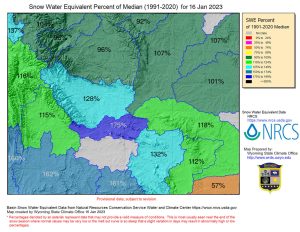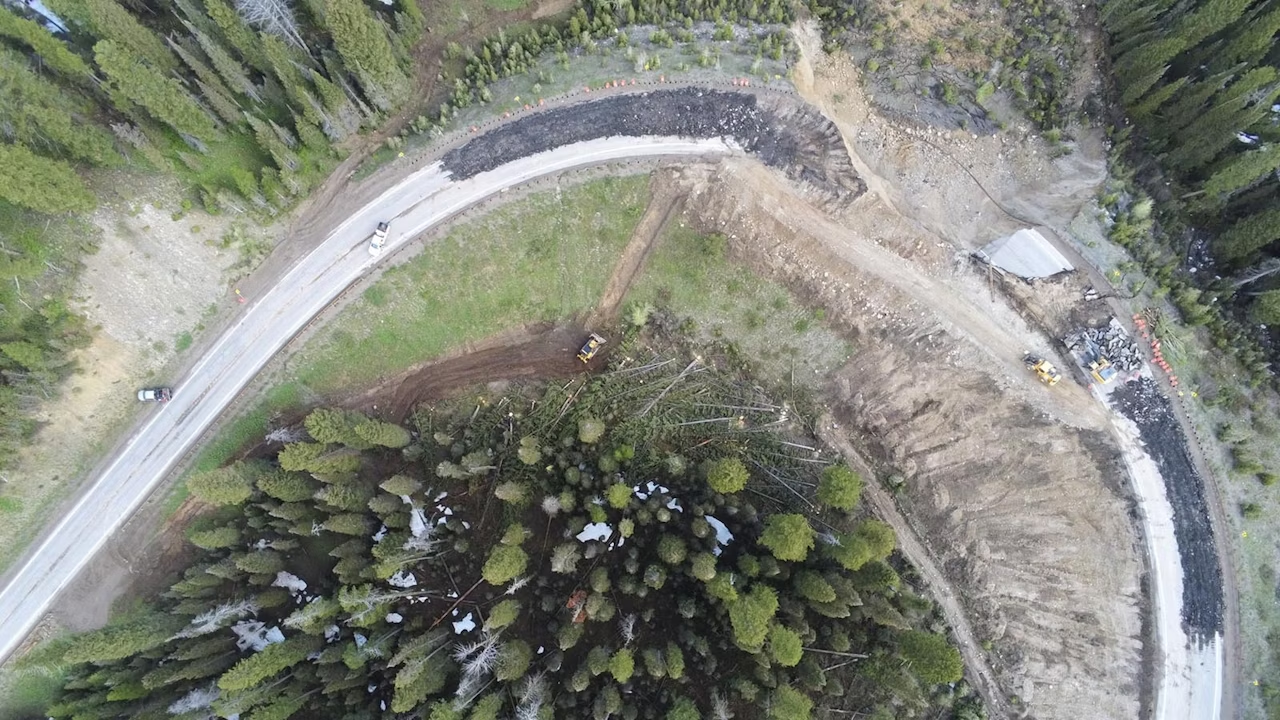Bighorn Basin Reservoirs Will Be Filled to the Brim in 2023
Written by Andrew-Rossi on January 16, 2023
After years of below-average inflow, all four reservoirs in the Bighorn Basin are anticipated to be at or above their 30-year-average water levels by summer, thanks to ample precipitation over the last few months.
The Bureau of Reclamation released its first snowmelt forecast for 2023 on Friday, Jan. 13. In the report, the spring runoff of each river in the Bighorn Basin is calculated to determine how full the basin’s reservoirs will be this summer.
A reservoir is considered “full” when the pool elevation is at the top of active conservation or joint-use pool. The percentage is based on the total reservoir volume below that level.

Courtesy National Park Service
Nearly every reservoir in the Bighorn Basin will be above – and well above – the average capacities for April through July snowmelt inflow.
Reclamation’s January forecast of the April through July runoff predicted for the Bighorn River Basin is as follows:
Bighorn Lake
- The April through July inflow from the Bighorn River to Bighorn Lake is forecast to be approximately 1,277,000 acre-feet (a.f.), which is 103% of the 30-year average of 1,235,000 a.f.
- As of January 1, Bighorn Lake is currently at 85% full.
Buffalo Bill Reservoir
- The April through July inflow from the Shoshone River to Buffalo Bill Reservoir is forecast at 700,000 a.f., which is 94% of the 30-year average of 748,300 a.f.
- As of January 1, Buffalo Bill is 71% full.
Boysen Reservoir
- The April through July inflow from the Wind River to Boysen Reservoir is forecast at 700,000 a.f., which is 115% of the 30-year average of 611,000 a.f.
- As of January 1, Boysen Reservoir is 83% full.
Bull Lake Reservoir
- The April through July snowmelt runoff from Bull Lake Creek into Bull Lake Reservoir is expected to be 150,000 a.f., which is 104% of the 30-year average of 144,200 a.f.
- As of January 1, Bull Lake Reservoir is 48% full.
This is the first time snowmelt runoff has been predicted to be above average for Bighorn Basin reservoirs in several years.
Winter 2022-2023 has provided much-needed moisture to the entire region, making a long-term difference. Snowmelt inflow was below average in 2021 and 2022, although most reservoirs were full to brimming in 2020.
Only the Buffalo Bill Reservoir near Cody is expected to be below its 30-year average, but only by six percent. However, this prognosis could quickly change if more snow accumulates in the mountains feeding the Shoshone River.
The latest Bureau of Reclamation predictions correspond with the snow-water equivalents measured by the Wyoming Water Resources Data System & State Climate Office. As of Jan. 16, all of northwest Wyoming has over 90% of its average snowpack.

Courtesy Wyoming
Water Resources Data System & State Climate Office




